How competitive are you, as a person?
Or, let’s reframe the question: how competitive are your marketing strategies?
While you can tell us the answer later, there’s no denying the power of competitive ads as an age-old paid marketing strategy.
Ever since the concept of advertising was born, brands have made the extra-bold move of publicly pointing each other out.
However, calling out a competitor in your ads is one of the riskiest marketing moves a brand can make.
When executed well, it can establish dominance, create viral moments, and even end up giving you the position of an industry leader. A perfect example of a well-executed competitive ad campaign is Apple’s “Get a Mac”, also known as “Mac vs PC” campaign making Windows look old-fashioned.
But when done poorly, a competitor-focused campaign can backfire badly, leaving the attacking brand looking desperate, untrustworthy, or completely outplayed. Even worse, sometimes these ads give free publicity to the competition or unintentionally set them up for an epic comeback.
But there’s a fine line between bold and reckless. Some brands fail to predict how the competitors — or even their audience — will respond. This article dives into five competitor-focused ad campaigns that completely flopped, examining what went wrong and what marketers can learn from them.
Upon reading this article, you’ll have a clear idea about:
- Why people call out competitors in ads.
- Risks associated with competitor-focused ads.
- Examples of competitor ads that flopped and why.
- Key takeaways.
Reasons behind competitor ads
But why call out competitors in ads instead of just promoting your values?
Brands use this approach for several reasons, such as:
- Differentiation: When a brand wants to clearly define itself against a major competitor.
- Market share play: Trying to steal attention and customers from a dominant rival.
- Capitalizing on perceived weaknesses: If a competitor has a flaw, a brand might highlight it to gain an edge.
- Generating PR buzz: Some competitor call-outs are meant to stir controversy and go viral.
It’s no secret that competitive advertising works when done right. A well-executed competitor-focused ad makes your brand look superior without appearing petty or insecure. But knowing when and how to do it is critical.
Brands typically run competitor-focused ads in three ways:
- Comparison ads: Side-by-side feature or pricing comparisons (e.g., Pepsi’s taste-test ads vs. Coke).
- Market dominance plays: Ads reinforcing why they are the best option (e.g., Apple vs. PC).
- Direct call-outs: More aggressive attacks on a competitor’s business model, product flaws, or brand image.
How to make your competitor ad successful
For a competitor-focused ad to succeed, it must do one of the following:
| Key Factor | Description |
|---|---|
| Be humorous and relatable | Lighthearted comparisons can make the ad entertaining rather than mean-spirited. |
| Highlight a real competitive advantage | Clearly explain why your brand is the better choice. |
| Provide value to the audience | Help customers make informed decisions so they see the ad as useful rather than corporate mudslinging. |
| Do proper competitor analysis | Conduct a SWOT analysis to anticipate competitors' moves and position your brand strategically. |
A great example is Apple’s “Get a Mac” campaign, which positioned PCs as clunky and out-of-date while portraying Macs as modern and cool — without being outright hostile.
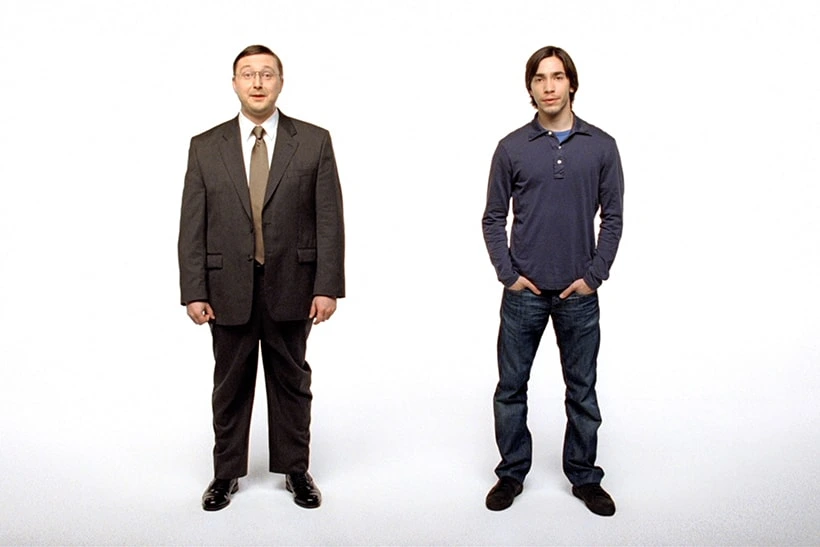
Apple’s famous “Mac vs PC” campaign.
But when competitor call-outs feel desperate, misleading, or invite a stronger clapback, they can do more harm than good.
Now, let’s look at five failed campaigns that prove just how risky this strategy can be.
Competitor ads that flopped (and why)
1. Microsoft’s “Scroogled” campaign (2012-2014)
Microsoft’s “Scroogled” campaign was supposed to expose Google’s questionable privacy policies and convince people to switch to Bing. Instead of highlighting why Bing was a better search engine, Microsoft spent millions attacking Google’s ad-based revenue model, implying that Google was secretly selling user data.
The campaign included:
- Paid search ads targeting “Google privacy” queries.
- Merchandising (yes, Microsoft literally sold “Scroogled” T-shirts).
- Social media and TV ads spreading fear about Google’s data collection.
Reason for failure and consequence
Rather than persuading users, the campaign made Microsoft look petty and desperate. The phrase “Scroogled” became a joke, and people didn’t feel Google’s privacy issues were severe enough to switch search engines. Worse, it highlighted Google even more, causing free publicity at Microsoft’s expense.
Key takeaway
Attacking a competitor without offering a compelling alternative weakens credibility. If the best argument for your brand is “at least we’re not them,” you’ve already lost.
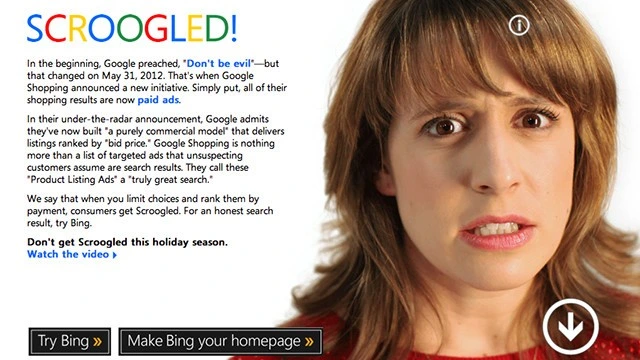
Microsoft’s Scroogled campaign.
2. Audi vs. BMW billboard war (2009)
Audi decided to take a shot at BMW with a billboard featuring an Audi A4, accompanied by the tagline: “Your pawn is no match for our king.”
In response to this campaign, BMW came up with a larger billboard directly across from Audi’s, displaying a BMW M3 and the simple, devastating word: “Checkmate.”
Reason for failure and consequence
Audi’s ad downplayed BMW without thinking ahead to the next possible actions of the opponent. BMW flipped the narrative and won the PR battle, making Audi’s campaign look like an unintentional setup for their own defeat. What was meant to be a power move ended up reinforcing BMW’s dominance, proving that a well-timed response can turn the tables in an instant.
Key takeaway
If you start a public rivalry, have a foolproof response strategy. Or, you might end up risking your competitor turning your own campaign against you.
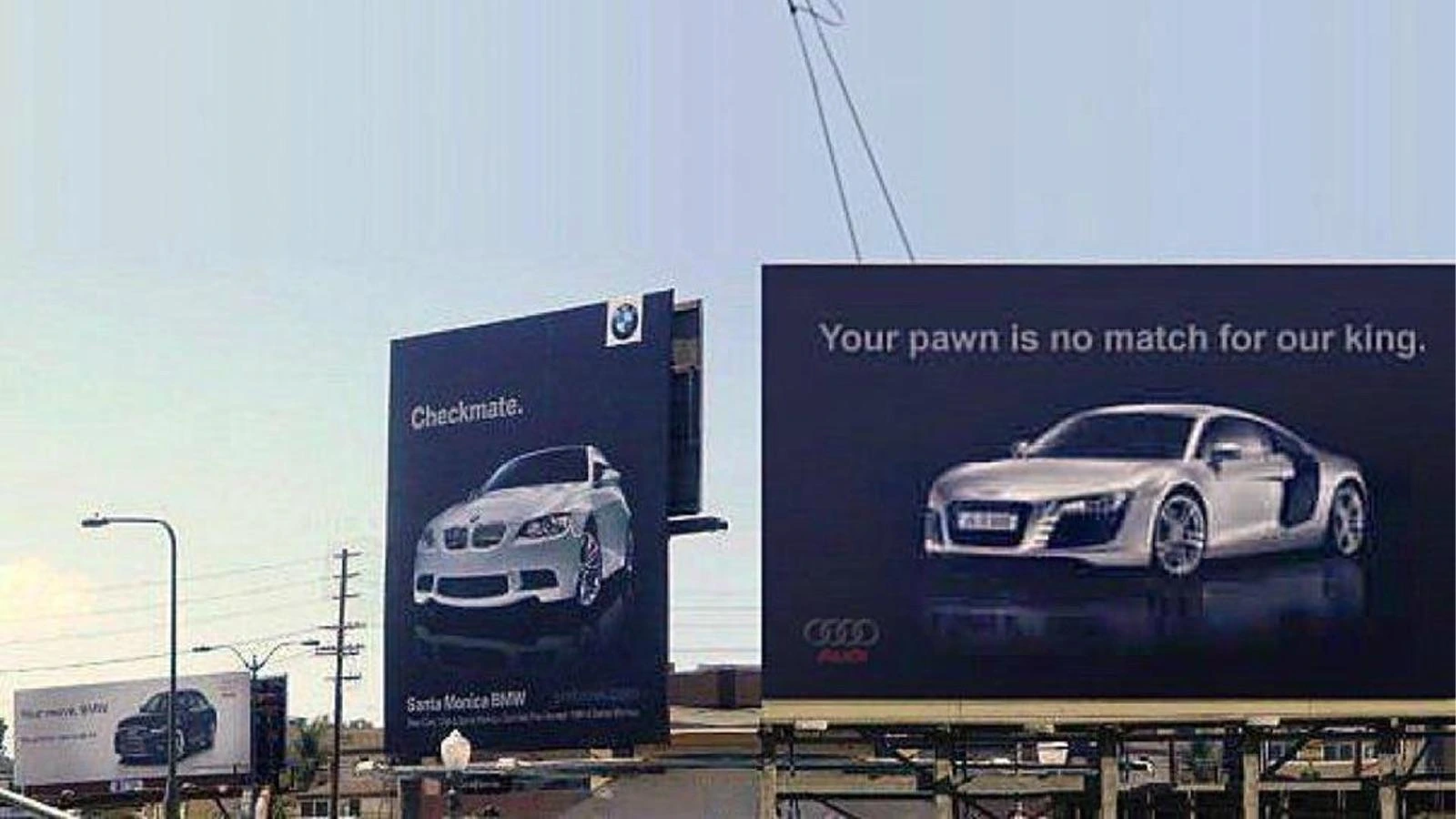
BMW and Audi’s billboard battle.
3. Samsung’s Apple-shaming ads
Samsung’s long-running “Next Big Thing” campaign mocked Apple users for blindly following trends and settling for “less innovative” devices. The ads frequently took jabs at Apple’s product limitations, which included having no headphone jacks.
However, fast forward a few years, Samsung removed the headphone jack too. Because of this, they had to face a great deal of backlash from Apple and overall smartphone enthusiasts.
Reason for failure and consequence
Consumers never fail to notice. And when you’ve launched a competitive ad that was quite successful, they will remember you more. Because of such turn-tables, smartphone enthusiasts didn’t need much time to catch the hypocrisy. The company that once called Apple fans “sheep” was now adopting the exact same features they mocked. Suddenly, their anti-Apple campaigns started seeming disingenuous. As a result, even though Samsung’s current ad campaigns are creative, they no longer hold the same gravity as they once used to.
Key takeaway
If you publicly call out a competitor for a decision, make sure you won’t follow the same path later — or be prepared to own the irony.

A still from Samsung’s controversial anti-Apple ad that they later deleted.
4. Sprint’s “Paul Switched” ad (2016)
Sprint poached Verizon’s famous “Can You Hear Me Now?” spokesperson, Paul Marcarelli, and had him endorse Sprint instead. The campaign banked on nostalgia, expecting consumers to follow their trusted figure from Verizon to Sprint. However, it didn’t work as expected.
Reason for failure and consequence
Customers didn’t see the switch as compelling. It felt inauthentic and opportunistic, as Paul had been the face of Verizon for years, making his sudden endorsement of Sprint seem more like a paid stunt than a genuine belief in the brand. Sprint failed to differentiate itself beyond poaching a familiar face, which offered no substantial reason why customers should actually switch. As a result, although the campaign generated buzz, it lacked real impact. This, in turn, made them fail to drive significant customer conversions or shift brand perception in Sprint’s favor.
Key takeaway
Stealing a competitor’s icon doesn’t always translate into credibility. Consumers don’t blindly follow spokespeople or ambassadors, they trust the brands themselves.
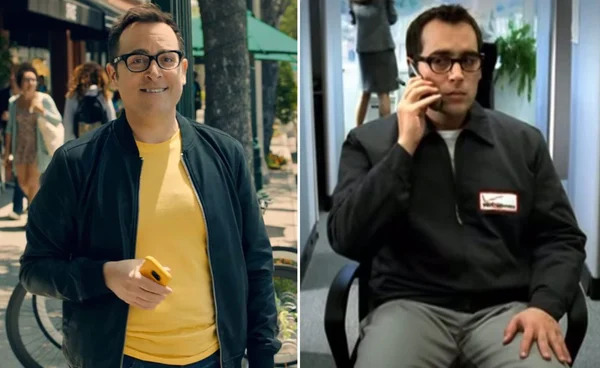
Paul for Sprint vs Paul for Verizon.
5. Burger King’s “McWhopper” stunt (2015)
Burger King publicly invited McDonald’s to collaborate on a “McWhopper” for world peace. The stunt was designed to generate goodwill and attract media attention. However, McDonald’s didn’t respond to the collaboration proposal at all.
Reason for failure and consequence
The complete silence of McDonald’s is the root cause of the failure of this campaign. Without the brand’s participation, Burger King looked like an attention-seeker rather than a challenger brand. When a campaign depends on a competitor’s engagement, it’s a risky move. If they ignore you, you lose. In this particular case, what Burger King should’ve done instead was ensure that the collaboration would take place through proper partnership and then unveil it to the public.
Key takeaway
If your campaign relies on a competitor’s response, make sure they have a reason to engage. Otherwise, you’re setting yourself up for an awkward failure.
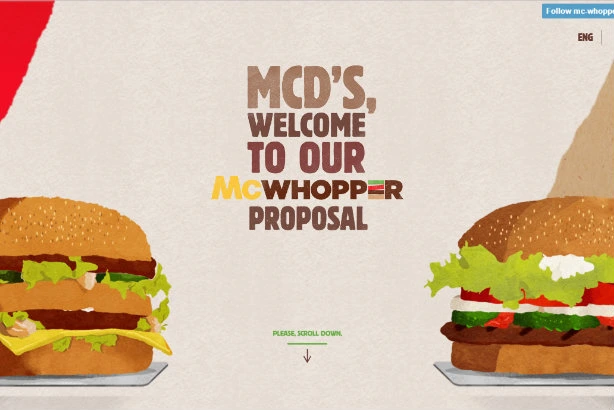
Burger King’s proposal to McDonald’s.
Lessons from these ad flops
From an audience perspective, these attacks and rebuttals through paid marketing can be quite funny and sometimes infuriating if you’re a strong supporter of the failed party (”I mean, what the heck were you thinking when you launched this campaign??!!”).
But from a business owner or marketer perspective, these failed campaigns and the interactions that they evoked can have a lot of lessons to learn from.
Summarizing these lessons in the next 5 points:
1. Attack with a purpose
Calling out a competitor should never be the sole focus of your campaign. A successful competitor-focused ad must tie the critique back to why your product is the superior choice. Without a strong value-driven narrative, a competitor attack ad comes across as petty and insecure, rather than persuasive.
2. Don’t start a fight you can’t win
Launching an attack means inviting a response. And if your competitor claps back stronger, your campaign might just set them up for an easy win. Before taking a direct shot at a competitor, brands must ask: What type of response I might be getting for this stunt? Is there a possibility of backfire? If the answer isn’t favorable, it’s better to rethink the strategy.
3. Avoid hypocrisy at all costs
If you mock a competitor’s product decisions, be absolutely sure you won’t make the same move later. Samsung’s repeated jabs at Apple for removing features like the headphone jack and stylus backfired spectacularly when they later made the same choices. This kind of inconsistency erodes trust and credibility, making your brand look like a copycat rather than leading them.
4. Make sure the audience actually cares
Just because you want to call out a competitor doesn’t mean consumers will find it relevant. Sprint’s attempt to poach Verizon’s “Can You Hear Me Now?” spokesperson fell flat because the ad narrative wasn’t compelling enough for the switch. The campaign failed to connect with consumer pain points, making it more of a gimmick than a compelling reason to switch carriers. If the audience doesn’t find the message useful, they’ll ignore it — or worse, mock it.
5. Think beyond short-term PR buzz
Many competitor attack ads generate short-lived media attention, but PR stunts don’t always translate into long-term business success. Before launching a competitor-focused campaign, brands must evaluate whether the long-term gains outweigh the risk of looking like a publicity seeker.
Each of these failed campaigns has a common factor and teaches us one thing: Competitor ads work best when they reinforce your strengths, not just highlight someone else’s flaws.
TLDR
- A competitor call-out ad should reinforce your strengths, not just attack a rival.
- If you start a competitor battle, be ready for a stronger comeback.
- Mocking a feature you might later adopt can make your brand look hypocritical.
- If the audience doesn’t care about your competitor's jab, the ad won’t resonate.
- Short-term buzz means nothing if the campaign doesn’t drive long-term growth.
FAQ
What is competitor ad analysis?
What is competitor ad copy analysis?
Which is the tool to spy on competitor ads?
How do you analyze competitor's ads?
Final thoughts
A competitor call-out ad should make your brand look stronger, not petty. The right execution can cleverly highlight your strengths while exposing a rival’s flaws. But if the messaging or the strategy misfires, you might risk losing your audience and handing your competitor an easy win.
The failed campaigns we’ve explored prove that attacking a competitor without strategy is a risky game. Whether it’s Microsoft’s bitter tone, Audi’s lack of foresight, or Samsung’s ironic self-sabotage, each brand made the same critical mistake — focusing too much on tearing a rival down instead of building themselves up. A good competitive ad won’t just throw punches, it will reinforce why your product is the better choice.
However, coming up with these easy unique creative ideas isn’t that easy. From brainstorming to executing — it takes a lot of time and effort. Furthermore, the process demands deep competitive analysis, precise audience targeting, and messaging that lands without backfiring. That’s not easy to pull off, especially when you’re managing everything in-house with minimal resources. A single misstep in execution, positioning, or timing can turn a bold move into a costly mistake. That’s why many businesses rely on paid marketing agencies, like Kaya, for end-to-end advertising services.

